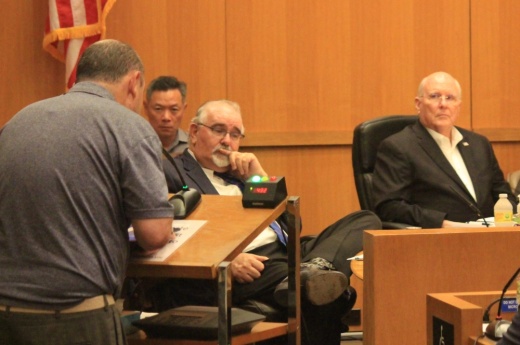Harris County Precinct 4 Commissioner Jack Cagle outlined a tax rate plan he claims would generate $149 million in revenue above the no-new-revenue rate during a news conference on Oct. 4.
Cagle’s plan corresponds to $108 million less in property tax revenue than what was originally proposed by the Office of Management and Budget. It sets aside $56 million for 200 additional full-time law enforcement officers and salary increases for current officers; $24.1 million for the Harris County Flood Control District; $45 million for the Harris Health System; and $24 million for discretionary spending.
“This is a compromise ... that we can meet halfway where the public gets something that they can appreciate and that they can value in exchange for more of their dollars when they’re facing rising costs and ... inflation,” Cagle said.
However, Cagle could not provide an overall tax rate that would correspond to his plan, nor did he specify how the $108 million difference would affect the budgets for other county departments. He said the $24 million in discretionary spending could go toward areas that would bring his colleagues to the table, and later in the news conference cited cost-of-living adjustments for other county employees and funding for the district attorney’s office as examples.
In addition, Cagle called on County Judge Lina Hidalgo to hold a special session of court on Oct. 7 before the court’s next regular meeting on Oct. 11 to discuss his plan publicly without being obligated to take a vote on the tax rate.
In an emailed statement, Hidalgo said she was hesitant to call a meeting because she is waiting to be "medically cleared." She announced via Twitter on Oct. 4 that she had visited the emergency room on Oct. 3 with a fever. Hidalgo said she also wants Cagle to present his plan to the budget office.
"More information is needed to fully understand the commissioner's high-level proposal," Hidalgo said. "If the proposal is ironed out with our budget team, I would consider calling a discussion-only meeting on Tuesday, separate from the Commissioners Court meeting later that day."
Cagle and Precinct 3 Commissioner Tom Ramsey have not attended the previous two court meetings, thereby preventing the Democratic court majority from voting on a tax rate. If at least four members of court do not appear at a meeting before Oct. 28, the county will be forced to adopt the no-new-revenue rate, which caps the county’s property tax-generated revenue to the same amount as the previous year.
As for the Oct. 11 meeting, Cagle said he would not say in advance whether he would show, but that if he does come, he would need an agreement that is “right for the public.”
“I’ve been invited to come into court, vote no, and then tell the people [I] voted no, when [the majority] knew full well that the minute I walked through the door, that their predetermined plan to be spent the way that they’ve predetermined it of a quarter of a billion dollars, would occur,” Cagle said. “That’s being deceptive to the public.”
In a statement to Community Impact, Precinct 2 Commissioner Adrian Garcia claimed he had a meeting scheduled with Ramsey that was cancelled shortly before Cagle's news conference and said that the negotiations thus far have been in "good faith."
“Cagle's proposal is not serious, and there are many questions about his numbers that need to be answered," Garcia said. "Because Harris County continues to grow, we also must consider every other basic service the county is responsible for. We can’t govern a county this size by negotiating in the press. Instead, we look forward to our colleagues making their case when they show up to court.”
Ramsey claimed in an emailed statement he had not cancelled a meeting with Garcia and said he had been communicating with the county attorney on potential proposals. Ramsey said he supported Cagle's proposal to provide funding to the flood control district and reiterated his own proposal of $20 million to fund 200 additional patrol officers.





